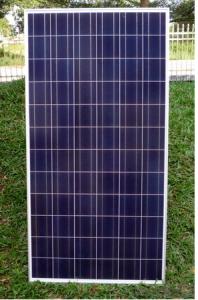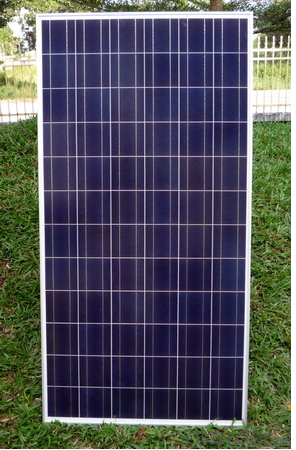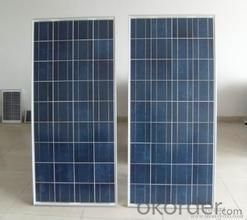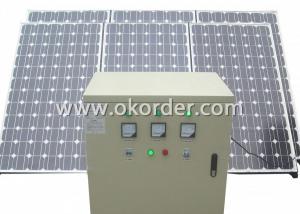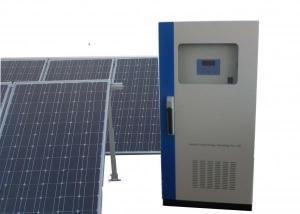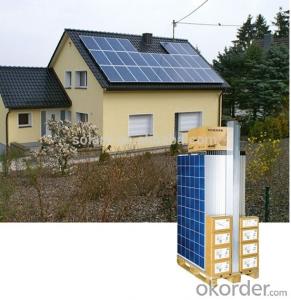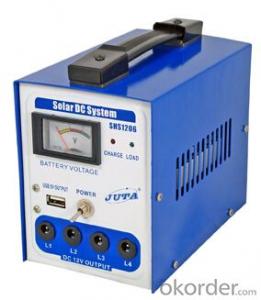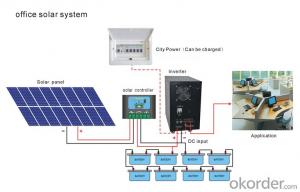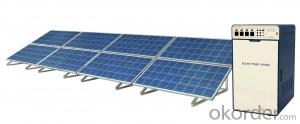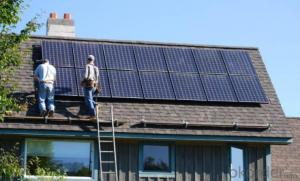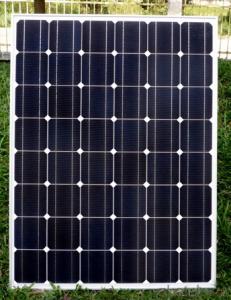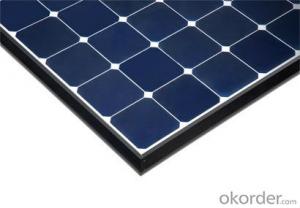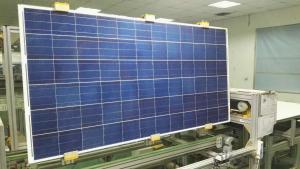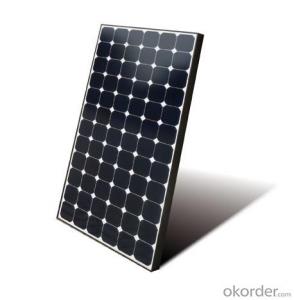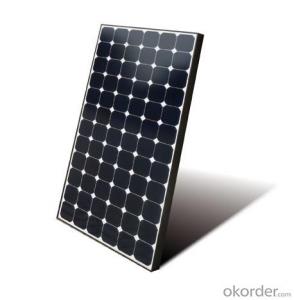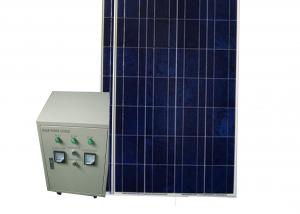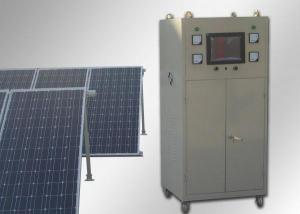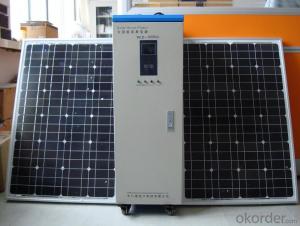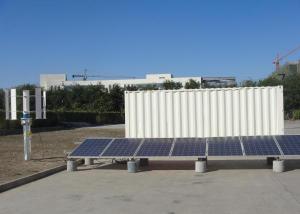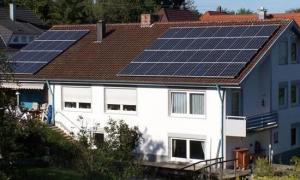American Solar Energy Systems CNBM Poly 70W Off Grid Solar System with 10 Years Warranty
- Loading Port:
- Shanghai
- Payment Terms:
- TT OR LC
- Min Order Qty:
- 10 watt
- Supply Capability:
- 1000 watt/month
OKorder Service Pledge
OKorder Financial Service
You Might Also Like
Specification
CNBM Poly 70W Off Grid Solar Sytem with 10 Years Warranty
Product description
Off-the-grid is a system and lifestyle[1] designed to help people function without the support of remote infrastructure, such as anelectrical grid. In electricity, off-grid can be stand-alone power system or mini-grids typically to provide a smaller community with electricity. Off-grid electrification is an approach to access electricity used in countries and areas with little access to electricity, due to scattered or distant population. The term off-the-grid (OTG) can refer to living in a self-sufficient manner without reliance on one or more public utilities. People who adopt this lifestyle are called off-gridders.[2]
The concept of a sustainable off-grid community must take into consideration the basic needs of all who live in the community. To become truly self-sufficient, the community would need to provide all of its own electrical power, food, shelter and water. Using renewable energy, an on-site water source, sustainable agriculture and vertical farming techniques is paramount in taking a community off the grid. A recent concept design by Eric Wichman shows a multi-family community, which combines all of these technologies into one self-sufficient neighborhood. To grow the community you simply add neighborhoods using the same model as the first. A self-sustained community reduces its impact on the environment by controlling its waste and carbon footprintElectrical power can be generated on-site with renewable energy sources such as solar (particularly with photovoltaics), wind, micro hydro, geothermal; with a generator or Micro combined heat and power with adequate fuel reserves. Such a system is called a stand-alone power system. In addition, it is possible to simply eliminate electric power such as in Old Order Amish and Old Order Mennonitecommunities.
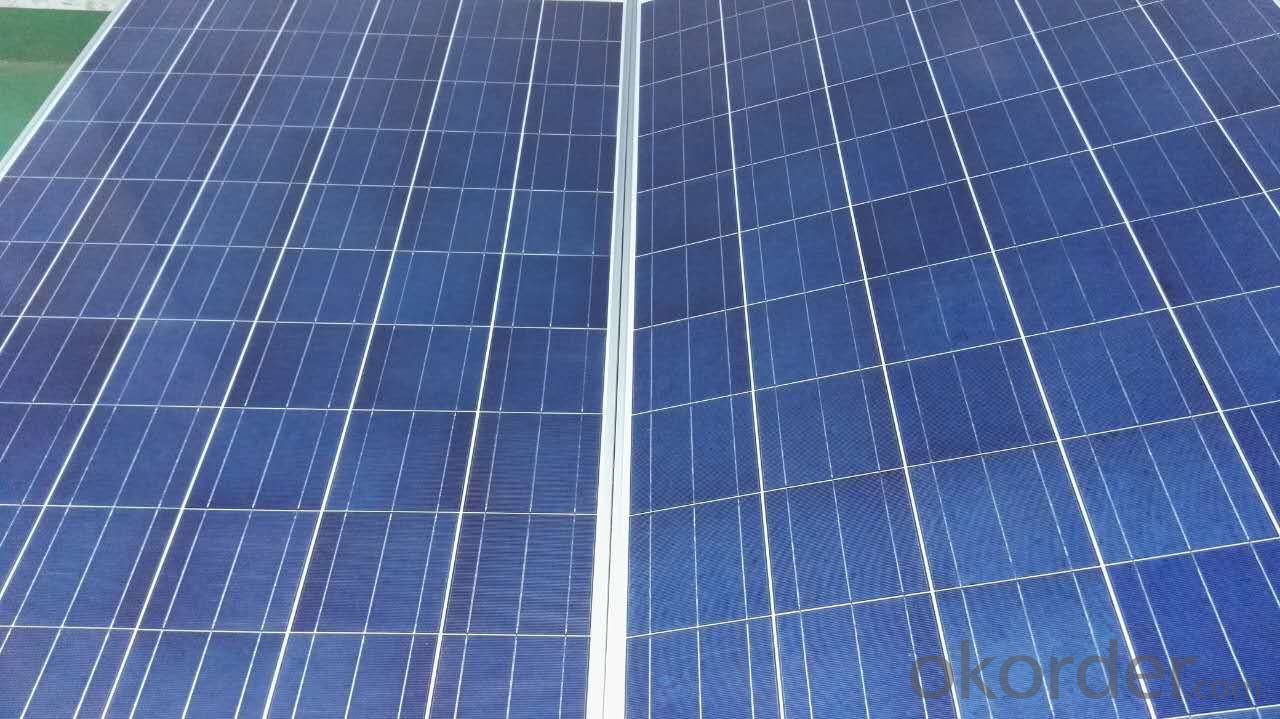
Application
Residential
Commercial
Industrial
Feature
Off-the-grid homes are autonomous; they do not rely on municipal water supply, sewer, natural gas, electrical power grid, or similar utility services. A true off-grid house is able to operate completely independently of all traditional public utility services. The idea has been recently popularized by certain celebrities including Ed Begley, Jr.[3] who stars in the Living with Ed[4] television show on the Home & Garden Television (HGTV) network. Actress Daryl Hannah promotes off-grid living and constructed her home in Colorado according to those principles, as does survival expert and Dual Survival co-star Cody Lundin,[5] who lives in a self-designed, passive solar earth house in the high-desert wilderness of Northern Arizona, collecting rainwater, composting waste, and paying nothing for utilities.[6][7]
Packaging
With carton and box
- Q: How much space is needed to install a solar energy system?
- The amount of space required for installing a solar energy system varies based on several factors such as the capacity of the system, the type of solar panels used, and the available sunlight. On average, for residential installations, a solar energy system typically requires around 100-400 square feet of roof space per kilowatt (kW) of solar capacity. However, ground-mounted systems can require more space, especially for larger installations. It is essential to conduct a site evaluation to determine the specific space requirements for a solar energy system.
- Q: Can solar energy systems be used for powering electric scooter charging stations?
- Yes, solar energy systems can be used to power electric scooter charging stations. Solar panels can be installed to harness energy from the sun, which can then be converted into electricity and used to charge electric scooters. This renewable energy source provides a sustainable and eco-friendly solution for powering charging stations, reducing reliance on traditional electricity grids and decreasing carbon emissions.
- Q: Can solar energy systems be used for powering restaurants?
- Yes, solar energy systems can be used for powering restaurants. Solar panels can be installed on the roof or in an open area near the restaurant to capture sunlight and convert it into electricity. This renewable energy source can help reduce electricity costs and lower the carbon footprint of the restaurant.
- Q: How does the angle and orientation of solar panels affect energy production?
- The angle and orientation of solar panels significantly impact energy production. By adjusting the angle, solar panels can optimize the amount of sunlight they capture throughout the day. Tilting the panels towards the sun's path maximizes the exposure and increases energy production. Similarly, the orientation of solar panels, such as facing south in the northern hemisphere or north in the southern hemisphere, ensures they receive the most sunlight. By optimizing both the angle and orientation, solar panels can generate more electricity and enhance overall energy production.
- Q: Are there any regulations or permits required for installing solar energy systems?
- Yes, there are regulations and permits required for installing solar energy systems. The specific requirements vary by location, but typically involve obtaining permits for building and electrical work, adhering to zoning and building codes, and complying with utility interconnection regulations. It is important to consult with local authorities or a professional installer to ensure compliance with all necessary regulations and obtain the required permits before installing a solar energy system.
- Q: Can solar energy systems be used in areas with high levels of dust or sandstorms?
- Yes, solar energy systems can be used in areas with high levels of dust or sandstorms. However, regular cleaning and maintenance of the solar panels may be required to ensure optimal performance. Additionally, selecting appropriate mounting systems and using dust-resistant materials can help mitigate the impact of dust or sandstorms on solar energy systems.
- Q: Can a solar energy system power an entire home?
- Yes, a solar energy system can power an entire home. With the right size and capacity, a solar energy system can generate enough electricity to meet the energy needs of a household, including powering appliances, heating and cooling systems, lighting, and other electrical devices. However, factors such as the home's energy consumption, the size and efficiency of the solar system, and the availability of sunlight can affect its ability to fully power the home at all times.
- Q: Can solar energy systems be used in areas with high levels of poverty?
- Solar energy systems can indeed be utilized in regions afflicted by poverty. In reality, solar energy can play a crucial role in alleviating poverty and enhancing the living conditions of individuals in these areas. Here are a few reasons why solar energy systems are feasible in poverty-stricken areas: 1. Cost-effectiveness: Over the years, solar energy systems have become more affordable, rendering them a viable option for economically disadvantaged communities. Once installed, solar panels can produce electricity without any ongoing expenses, thereby reducing the burden on families struggling to pay for conventional energy sources. 2. Energy independence: By providing a decentralized and local electricity source, solar energy systems enable communities to become self-reliant and less reliant on centralized power grids. This independence empowers impoverished individuals to access reliable electricity, enhancing their quality of life and enabling economic activities, such as small-scale businesses. 3. Environmental sustainability: Solar energy is a clean and renewable power source, which aids in safeguarding the environment in impoverished areas. These regions often lack access to modern infrastructure, resulting in a heavy reliance on fossil fuels like kerosene lamps or diesel generators, which contribute to pollution and health issues. Solar energy systems offer a sustainable alternative by reducing carbon emissions and improving air quality. 4. Job creation and economic development: The establishment and maintenance of solar energy systems generate employment opportunities within the local community. This job creation can stimulate economic growth and enhance the financial prospects of individuals living in poverty. Moreover, solar energy can be harnessed for productive purposes, such as powering irrigation systems, small-scale manufacturing, or water purification, thereby contributing further to poverty reduction. 5. Humanitarian aid initiatives: Numerous organizations and governments actively engage in implementing solar energy projects in impoverished areas. These initiatives focus on providing solar power to schools, hospitals, and community centers, ensuring access to education, healthcare, and communication facilities. By addressing these fundamental needs, solar energy can uplift communities and enable them to break the cycle of poverty. In conclusion, solar energy systems possess the potential to be effectively utilized in areas with high levels of poverty. The affordability, energy independence, environmental sustainability, job creation, and humanitarian aid aspects make solar energy an ideal solution for enhancing the lives of individuals residing in poverty-stricken areas.
- Q: Can solar energy systems be used for powering electric vehicle public transportation systems?
- Yes, solar energy systems can definitely be used for powering electric vehicle public transportation systems. Solar energy is a clean, renewable and abundant source of power that can be harnessed to generate electricity for various applications, including charging electric vehicles. Solar panels can be installed on the rooftops of public transportation facilities, such as bus depots or charging stations, to generate electricity. This energy can then be used to charge the batteries of electric buses or other electric vehicles used in public transportation systems. The scalability of solar power systems makes them suitable for public transportation infrastructure. Depending on the size of the solar installation, it is possible to generate enough electricity to power an entire fleet of electric buses or other public transport vehicles. This reduces the reliance on fossil fuels and decreases greenhouse gas emissions, leading to a cleaner and more sustainable transportation system. Furthermore, solar energy systems can also be combined with energy storage technologies, such as batteries, to ensure a continuous power supply even during periods of low solar irradiation or at night. This allows for a reliable and uninterrupted charging infrastructure for electric vehicles. In addition to the environmental benefits, solar-powered electric public transportation systems can also lead to cost savings in the long run. While the initial investment for installing solar panels may be higher, the operational costs are significantly lower compared to traditional fossil fuel-based systems. Solar energy is free, and once the infrastructure is in place, the ongoing expenses are minimal. This can result in substantial savings for public transportation authorities over the lifetime of the system. Overall, solar energy systems are a viable and sustainable solution for powering electric vehicle public transportation systems. They offer environmental benefits, cost savings, and contribute to reducing dependence on fossil fuels. With the advancement of solar technology and decreasing costs, the integration of solar power in public transportation infrastructure is a promising avenue for a cleaner and greener future.
- Q: Can solar energy systems be used for powering disaster relief operations?
- Yes, solar energy systems can be used for powering disaster relief operations. Solar power provides a reliable and renewable source of energy, making it ideal for areas impacted by natural disasters where traditional power infrastructure may be damaged or unavailable. Solar energy systems can be quickly deployed, enabling immediate access to electricity for emergency services, communication devices, medical equipment, and temporary shelters. Additionally, solar power systems reduce reliance on fossil fuels, minimizing environmental impact in already vulnerable areas.
Send your message to us
American Solar Energy Systems CNBM Poly 70W Off Grid Solar System with 10 Years Warranty
- Loading Port:
- Shanghai
- Payment Terms:
- TT OR LC
- Min Order Qty:
- 10 watt
- Supply Capability:
- 1000 watt/month
OKorder Service Pledge
OKorder Financial Service
Similar products
Hot products
Hot Searches
Related keywords
